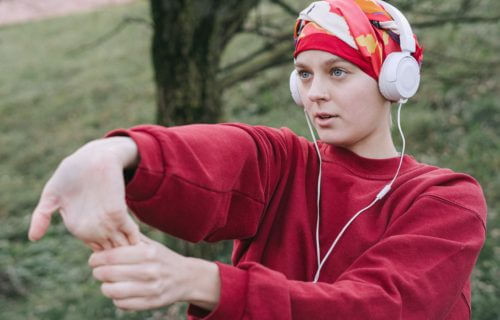JOONDALUP, Australia — It’s no secret that exercise is good for the body, but new findings from a team at Edith Cowan University suggest breaking a sweat regularly is like medicine for cancer patients — and every dose counts. Researchers report that just a single exercise session elevated anti-cancer proteins called myokines among a group of late-stage prostate cancer patients. The myokine levels observed post-exercise, study authors say, are enough to significantly suppress tumor growth.
Prior studies conducted at ECU’s Exercise Medicine Research Institute have shown that men with advanced prostate cancer are able to change the chemical environment within their own bodies over the course of six months by exercising, consequently suppressing cancer cell growth. Back then, researchers recorded higher levels of myokines, which the skeletal muscles produce and are capable of suppressing tumor growth. They even actively fight cancerous cells by stimulating various anti-cancer processes within the body.
Now, this latest EMRI study shows that just a single bout of exercise is enough to elevate myokines even further and induce additional cancer suppression. Importantly, these findings indicate exercise is beneficial for cancer patients, even those with advanced cases who have already received extensive treatment over many years.
A total of nine patients with late-stage prostate cancer performed 34 minutes of high intensity exercise on a stationary cycle. Researchers collected blood serum immediately before the workout, immediately afterwards, and then again 30 minutes post-workout.
The team discovered that blood obtained just after working out displayed elevated levels of anti-cancer myokines, those extra myokines resulted in less growth of prostate cancer cells in vitro by roughly 17 percent. Serum myokine levels and cancer suppression returned to baseline readings after a half-hour had passed.
What’s the ‘minimum dose’ of exercise for cancer patients?
According to EMRI researcher and study supervisor Professor Rob Newton, this work represents a breakthrough moment in exercise oncology.
“The findings from our work are particularly exciting because we report for the first time ever that men with advanced prostate cancer are able to produce an acute elevation in anti-cancer molecules called myokines in response to a single bout of vigorous exercise,” Newton says in a university release.
“This is helping us to understand why patients with cancer who exercise exhibit slower disease progression and survive for longer,” the researcher adds. “These patients are palliative, so there is no cure and they will eventually succumb – however, there is evidence that exercise will extend survival and the increased myokine levels explored in our recent paper is a prime mechanism.”
While Prof. Newton admits there is still much more research necessary, the results of this study can start shaping the advice doctors give to cancer patients.
“The optimal dose of exercise is not yet known, but it is likely to be 20-plus minutes each day and must include resistance training to grow the muscles, increase the size and capacity of the internal pharmacy, and stimulate the myokine production,” Newton concludes.
“This study provides strong evidence for the recommendation patients with prostate cancer, and likely anybody with any cancer type, should perform exercise most days, if not every day, to maintain a chemical environment within their body which is suppressive of cancer cell proliferation.”
The study is published in the journal Prostate Cancer and Prostatic Diseases.

